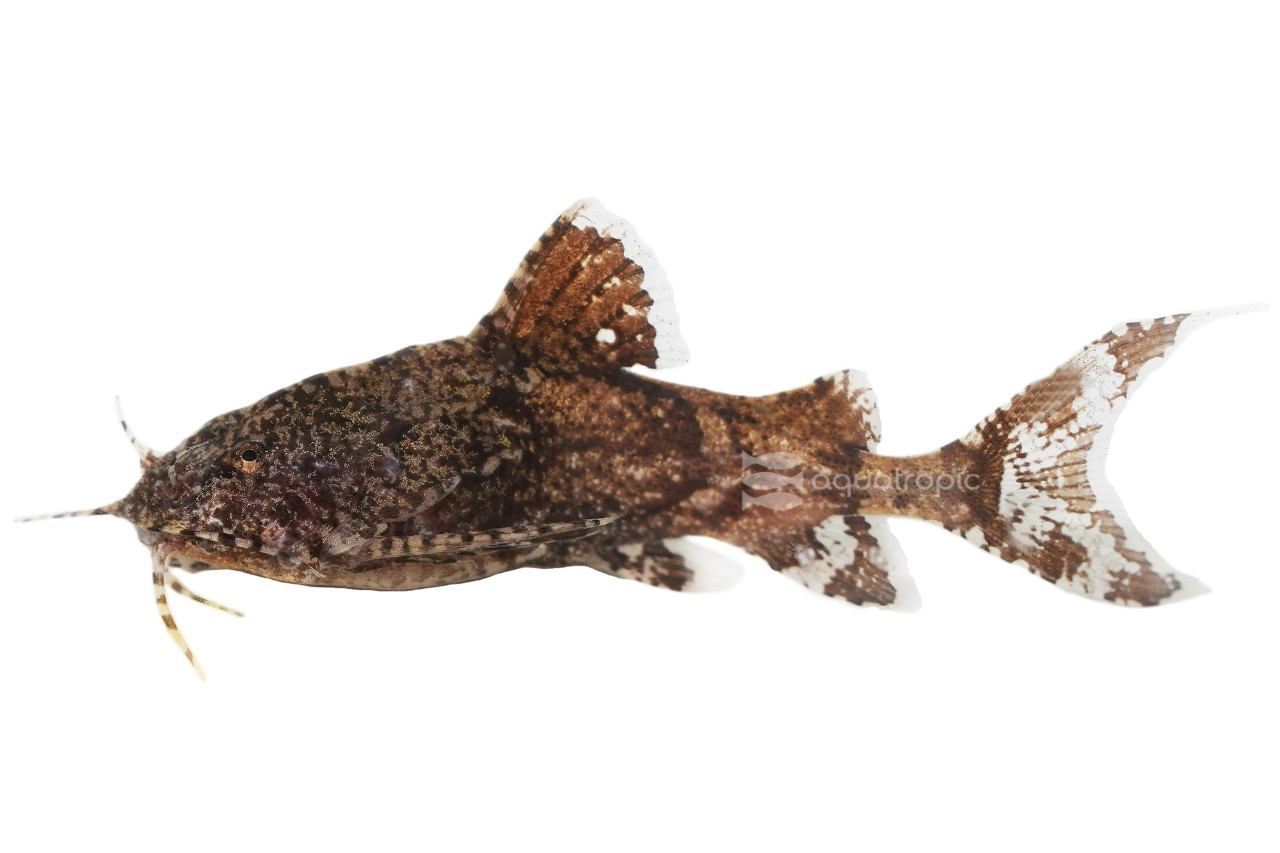The Rock Cats of the River Salween

The Salween is the longest dam-free river in mainland Southeast Asia, running for 2044 miles. It originates in the mountains of Tibet, flows through China and Myanmar before emptying out into the Andaman Sea. This river shares its name with a fish that lives there called the Salween Rock Catfish, though the fish can also be found in the Salween's feeder streams and other rivers of the area. It's a small fish that comes from sections of the river that are shallow, clear and fast flowing over sand, shells and small rounded stones.
The scientific name of this fish is Hara filamentosa, though you may also see this fish called (or sold as) Erethistes filamentosus and Erthistes maesotensis. You'll also see these scientific names used in some articles about this fish, and they all represent the same animal. You'll occasionally see them listed with the common name: Salween River Catfish. These are gorgeous little cats, with a long flowing trailer off their tail fin when mature. They are usually a camouflage patterned brown, though we've seen them in gray and drab greens with similar blotchy patterning as well.
These are diminutive, little Catfish, never getting much bigger than three and half inches long which makes them suitable for a much smaller aquarium than another cat that looks very similar when small, the Goonch. The Goonch Catfish is a massive cat, one that has inspired legends of man eating and would outgrow any aquarium that wasn't public aquarium sized. For those monster fish keepers among us that don't have a 10,000-gallon display, this is your chance to have a Goonch look-a-like that you could keep in a 40-gallon aquarium! Though honestly, we think it looks cooler than that by far.
For those of you with a fast-flowing Hillstream type display, these fish will be completely at home there, though that isn't a requisite. They will do best with high dissolved oxygen levels, and a lot of flow is one way to accomplish this. You can also use air stones (or air stones and flow). They'll also do well in planted aquariums. These fish will spend most of their time on the bottom, so choosing rounded stone, or a soft sand will help keep them from irritation. They'll appreciate plenty of hiding spots, whether that's in caves, or PVC tubes, or behind a bunch of Anubias. They can thrive in huge range of temperatures, being found in water as cold as 50 and as warm as 80 in the Salween; we suggest the mid 70s for your home display. They aren't picky about hardness and the pH should be neutral to slightly acidic, aim for 6-7. Keep nitrates under control, less than 20ppm or better. They love water changes, and the flow of fresh oxygenated water they bring, you'll see.
Salween River Catfish are really peaceful and could be kept with a wide variety of fish. Avoid really aggressive stuff like Rift Lake Cichlids that are likely to pick on the Cat. These Catfish will also develop a long trailing fin that may be too tempting for notorious nippers like Tiger Barbs to leave alone, so add fish like that with caution. SRCs can be kept singly, though we recommend keeping a few if you have the space, they are more gregarious if you keep them in multiples, though they don't interact much outside of courtship. Having multiples also means you'll usually see at least one of them, even if the rest have gone into hiding!
Hara filamentosa is generally easy to feed, accepting thawed foods like Gamma Mysis and Bloodworms without any hesitation. They'll also love the Gamma Chopped Prawn, and will greedily consume live worms, tubifex and brine shrimp if you have them; for any fish you find that are hesitant to accept thawed foods, adding it with a few live tidbits will quickly convince them. Salween River Cats are also great candidates for the Nutramar Complete Shots as they are generally nocturnal, and you can put a shot down low on the glass or rocks at lights out and they'll usually polish that off by morning. Unlike most nocturnal catfish, these will be fairly active during the day, especially once they associate you and the light with feeding time. Here we feed them twice a day, though once would be sufficient as long as they got plenty of food.
The world's waterways are full of gorgeous little Catfish (and some really Jeremy Wade sized ones as well). Hara filamentosa is one of our favorites right now for their showy looks, their high activity level, and their unbeatable size and hardiness! If you've been looking for a perfect small catfish for your display, then Salween Rock Cats should be on your list. Ask your LFS about getting you one from Aquatropic today!